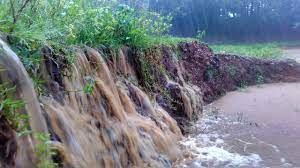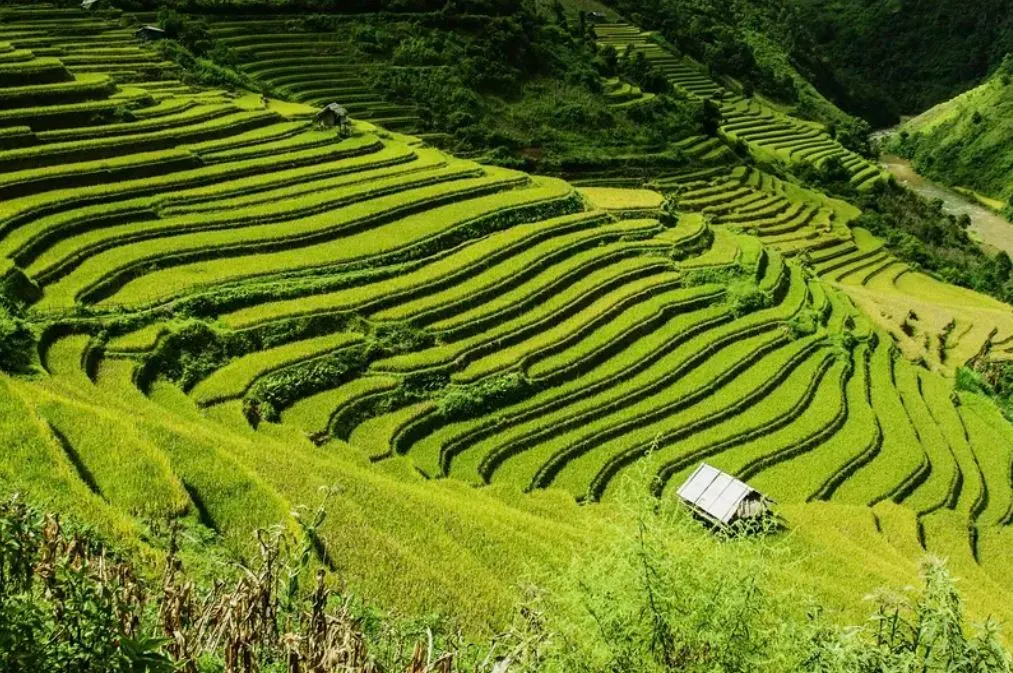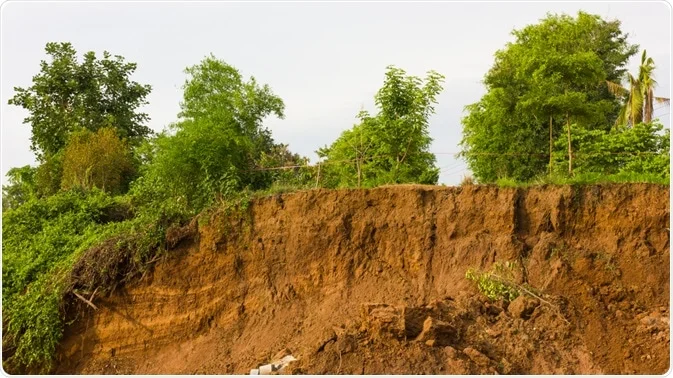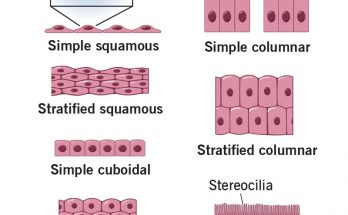Soil erosion is a process that might seem slow but has significant effects on our environment. It happens when forces like water or wind act upon the soil, detaching and moving soil particles. This gradual process can cause the soil to deteriorate, losing its fertility and structure. When soil erosion occurs, it doesn’t just affect the land; it impacts water quality too. Sediments, which are tiny bits of soil, get carried away into rivers and streams, affecting the quality of the water.
Understanding soil erosion is crucial because it directly impacts agricultural productivity and the environment. Productive lands can lose their ability to support crops, leading to challenges in food production. Additionally, as soil quality decreases, water quality is also affected, which can have broader implications for ecosystems and human health.
In areas like Iowa, water erosion is a particularly pressing issue. When topsoil is eroded, it’s often carried off to waterways, adding to sedimentation and further degrading water quality. By understanding the factors that lead to soil erosion, we can better implement practices to control it, safeguarding our land and water resources for future generations.
Table of Contents
What is Soil Erosion?
Soil erosion is more than just dirt moving from one place to another. It’s a natural process where the top layer of soil is worn away due to factors like water, wind, or even human activities. Imagine the soil as a blanket covering the earth; erosion is like the wind slowly pulling away parts of this blanket, exposing the layers beneath.
In nature, soil erosion happens through two main forces- water and wind. When it rains, water can run over the ground’s surface, picking up soil particles and carrying them away. This is especially true if the land is bare without plants or trees to hold the soil in place. This kind of water-driven erosion can create small channels in the land, known as rills, or even larger ones, known as gullies.
Wind erosion happens in a similar way, but with air as the moving force. In places where the land is dry and bare, strong winds can lift soil particles and blow them to new locations. This is often seen in deserts or large open fields.
While soil erosion is a natural process, it’s accelerated by human activities like deforestation, overgrazing of farm animals, and improper agricultural practices. These activities remove the natural vegetation that protects the soil, making it easier for wind and water to erode it.
Soil erosion is not just a removal of soil; it’s a change that affects the health of our ecosystems. Understanding this process helps us appreciate the need to manage our land and natural resources wisely. By doing so, we can prevent soil degradation and maintain the earth’s fertility for future generations.
Types of Soil Erosion
Soil erosion can happen in different ways, mainly categorized by the forces that cause it. The two primary types are water erosion and wind erosion. Let’s explore what each of these means.
Water Erosion

- This is the most common type of soil erosion. Water, in various forms, can cause the soil to move from its place. Here are a few ways water can lead to erosion-
- Raindrop Erosion- It starts with the impact of raindrops hitting the soil. This might seem minor, but these raindrops can dislodge soil particles, making them easier to be washed away.
- Sheet Erosion- This occurs when a thin layer of soil is removed uniformly from an area. It’s like a sheet being slowly pulled away, and it happens mostly on sloped lands during heavy rains.
- Rill Erosion– When water running down a slope forms small channels, which are known as rills, this is rill erosion. These channels can become deeper and wider over time.
- Gully Erosion- This is a more severe form of rill erosion. When water flow becomes strong enough, it can create large channels or gullies, which are too big to be removed by normal agricultural practices.
Also CHekc – The Water Cycle: The Steps and Hydrologic Processes from Evaporation to Infiltration
Wind Erosion

- In areas with less vegetation and strong winds, wind erosion becomes a significant problem. It’s more common in arid or semi-arid regions, where the land is dry and there are fewer plants to hold the soil in place. Here’s how wind causes soil erosion-
- Suspension– Fine soil particles are lifted and carried away by the wind, sometimes traveling long distances.
- Saltation- Smaller particles can be bounced along the ground by the wind, causing a sand-blasting effect that dislodges more particles.
- Surface Creep– Larger soil particles that can’t be lifted or bounced roll along the ground’s surface.
Both water and wind erosion can drastically change landscapes, reduce soil fertility, and affect agricultural productivity. By understanding these types of soil erosion, we can better prepare and implement strategies to reduce their impact.
Causes of Soil Erosion
Understanding what causes soil erosion is essential in learning how to prevent it. There are both natural and human-induced factors that contribute to this environmental challenge.
Natural Causes-
- Rain- Heavy rainfall is a primary natural cause of soil erosion. The force of raindrops hitting the soil can dislodge soil particles, making them more susceptible to being washed away.
- Wind- In areas with little vegetation, wind can be a powerful force in eroding soil. It can pick up loose soil particles and transport them over great distances.
- Topography- The natural shape and features of the land also play a role. Steep slopes are more prone to soil erosion as gravity aids in the movement of water and soil down the slope.
- Soil Type- Some soil types are more susceptible to erosion than others. Sandy soils, for example, are more easily eroded by wind, while clay soils are more prone to water erosion.
Human-Induced Causes-
- Deforestation- Removing trees and vegetation reduces the soil’s stability. Trees and plants not only prevent soil erosion by binding the soil with their roots but also help absorb the water that can erode soil.
- Agricultural Practices- Certain farming techniques, like plowing or tilling the land, can make the soil more vulnerable to erosion. Overgrazing by livestock can also remove protective vegetation cover, leading to soil erosion.
- Urbanization and Construction- Construction activities and urban development can disturb the land, making it more susceptible to erosion. When natural vegetation is cleared for buildings or roads, the exposed soil is more likely to be eroded.
- Mining and Quarrying- These activities greatly disturb the land’s surface, leading to increased soil erosion in those areas.
Recognizing these causes helps in understanding the broader impact of soil erosion and the need for sustainable land management practices to protect our environment.
Effects of Soil Erosion
The impacts of soil erosion extend far beyond just the loss of soil. They affect our environment, agriculture, and even human life in various ways. Let’s explore some of these effects-
Environmental Impact-
- Loss of Topsoil- The top layer of soil is rich in nutrients and organic matter. Erosion strips away this fertile layer, reducing the soil’s overall health and productivity.
- Reduced Water Quality- As soil erodes, it carries with it nutrients and pesticides into waterways. This sedimentation can pollute rivers and streams, affecting aquatic life and water quality.
- Habitat Destruction- Soil erosion can lead to the loss of habitats for various species. As the landscape changes, the natural habitats of plants and animals are disrupted, affecting biodiversity.
- Increased Flooding- When soil is eroded, less water is absorbed into the ground. This can lead to increased runoff, causing more frequent and severe flooding in certain areas.
Agricultural Consequences-
- Reduced Crop Yields- As the fertile topsoil is eroded, the remaining soil has fewer nutrients necessary for plants to grow. This can lead to decreased agricultural productivity and lower crop yields.
- Soil Compaction- Erosion often leaves behind a harder, compact layer of soil that is less suitable for farming. This compacted soil can be difficult to cultivate and can negatively affect crop growth.
Impact on Human Life-
- Food Security- Soil erosion can threaten food security by reducing the amount of usable agricultural land and decreasing crop yields.
- Economic Losses- The loss of productive land to erosion can lead to economic hardships for farmers and communities dependent on agriculture. Restoring eroded land can also be costly.
- Health Issues- In some cases, soil erosion can lead to air and water pollution, which can have direct health impacts on human populations, especially in rural areas.
Also Check – What is Humus? Exploring the Heart of Healthy Soil
Preventing Soil Erosion

Soil erosion can be a challenging issue, but the good news is that there are effective ways to prevent it. Both natural and artificial methods can be employed to protect the soil. Let’s look at some of these preventive measures-
Natural Methods-
- Planting Vegetation- Plants and trees are excellent at holding soil in place with their roots. Growing grass, shrubs, or trees on bare land can significantly reduce erosion.
- Cover Crops- In agriculture, planting cover crops like clover or rye during the off-season can help keep the soil covered and anchored.
- Mulching- Applying a layer of mulch (like leaves or straw) over the soil can protect it from the impact of raindrops and reduce water runoff.
Also Check – Runoff in the Water Cycle- Explore the Effects of Hydrologic Cycle Runoff
Artificial Methods-
- Terracing- This involves creating terraces on sloped lands to slow down water flow and reduce soil erosion. It’s particularly effective in hillside farming.
- Contour Plowing- This agricultural practice involves plowing along the contours of the land, rather than up and down slopes. This helps slow down water flow and reduces soil erosion.
- Windbreaks- Planting trees or shrubs in rows across the direction of the wind (also known as shelterbelts) can significantly reduce wind speed and, as a result, wind erosion.
- Retaining Walls- Building walls or barriers can help hold the soil in place, particularly in areas prone to heavy erosion.
- Drainage Control- Properly managing water drainage through channels or ditches can prevent excessive water accumulation and soil erosion.
Combination of Methods-
- Often, a combination of these methods is most effective. For example, planting vegetation along with terracing can provide double protection against soil erosion.
These preventive measures not only help in reducing soil erosion but also contribute to maintaining soil health, water quality, and biodiversity. Implementing these strategies is key to sustainable land management and environmental protection.
Curious Questions About Soil Erosion with Answers
Question- If soil erosion is a natural process, why is it considered a problem?
Answer- While soil erosion is natural, it becomes a problem when it happens too quickly or extensively, mainly due to human activities. This accelerated erosion can lead to loss of fertile topsoil, water pollution, and can negatively impact agriculture and ecosystems.
Question- Can plants grow back on eroded land?
Answer- It depends on the severity of the erosion. If the erosion is mild, plants can sometimes grow back as there might be enough soil left for plant roots. However, in cases of severe erosion, where the topsoil is completely removed, it becomes very difficult for plants to regrow without human intervention to restore the soil.
Question- Do worms help in preventing soil erosion?
Answer- Yes, surprisingly, worms can help! They create tunnels in the soil, which increases its ability to absorb water. This can reduce runoff and, consequently, soil erosion. Plus, their waste, known as worm castings, is a great natural fertilizer that helps strengthen plant growth, which in turn protects the soil.
Question- Can soil erosion affect the weather?
Answer- Indirectly, yes. Soil erosion can lead to desertification, where fertile land becomes desert. This can change local climate patterns, often leading to reduced rainfall and drier conditions, which can affect weather over time.
Question- Is soil erosion a new problem caused by modern human activities?
Answer- Soil erosion has been occurring for millions of years, but it has significantly increased due to modern human activities such as deforestation, intensive agricultural practices, and urban development. Historically, some civilizations even collapsed partly due to the effects of severe soil erosion and the resulting agricultural decline.

